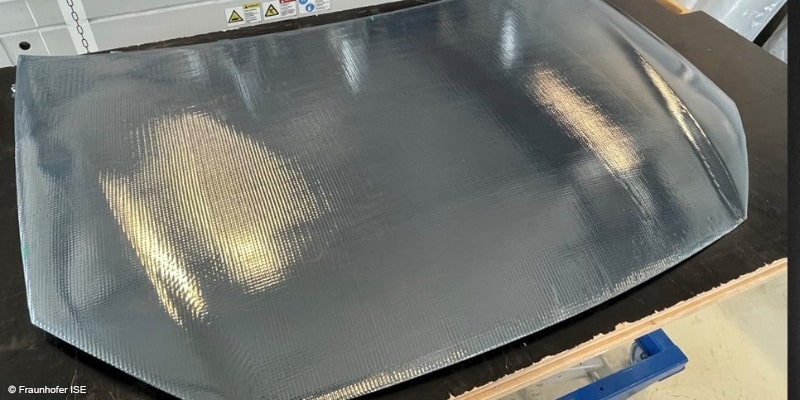Researchers at Fraunhofer ISE have unveiled a pioneering advancement in solar power integration for automobiles. Through two publicly funded research initiatives, they have successfully incorporated solar cells directly into the standard sheet metal bonnet of a car, marking a significant step beyond traditional vehicle solar roofs.
The innovative photovoltaic bonnet, boasting an impressive rated output of 115 watts, is set to make its debut at the upcoming IAA Mobility event. The bonnet features 120 PERC shingle solar cells and is elegantly finished in grey, highlighting both aesthetics and functionality. Dr. Harry Wirth, the Head of Power Solutions at Fraunhofer ISE, noted the potential extension of this technology to vehicle roofs, highlighting the weight advantage compared to glass-based photovoltaic roofs.
See also: London-based EV charging app Bonnet raises £3m from institutional investors
One intriguing facet of this breakthrough lies in its compatibility with Fraunhofer ISE’s ‘MorphoColor’ technology. This adaptable feature allows the solar-active surface to seamlessly blend with the car’s color scheme, further integrating renewable energy generation into the vehicle’s design.
Detailing the development process, Dr. Martin Heinrich, the coordinator for PV mobility at Fraunhofer ISE, explained, “We strategically applied and interconnected the solar cells onto a widely used car model’s hood panel, securing them with a specialized laminated film. Careful optimization of the lamination process ensured the preservation of the hood’s structural integrity while accommodating the curved surface.”
This recent accomplishment builds upon Fraunhofer ISE’s prior ventures in vehicular solar integration. In October 2021, they fitted an 18-tonne electric truck with photovoltaic panels, aiming to contribute between five to ten percent of the truck’s energy requirements. The project, initiated in April 2020, derived from groundwork laid even earlier, as announced by Fraunhofer ISE in 2019.
The technology’s effectiveness was previously measured based on conditions simulating an electric car’s performance in the German city of Freiburg. Under this scenario, the car demonstrated a consumption rate of 17 kWh per 100 km and an annual mileage of 15,000 km.
As the automotive industry increasingly seeks innovative energy solutions, Fraunhofer ISE’s integration of solar cells into car bonnets opens new possibilities for eco-friendly mobility. The imminent showcase of the photovoltaic bonnet at IAA Mobility promises to shed light on the future of energy-efficient vehicles.

